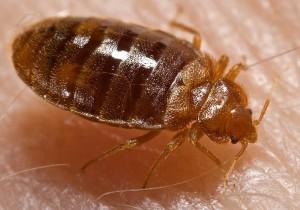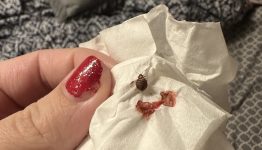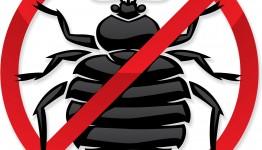 Bed Bugs are very stubborn, resourceful, and sophisticated little critters considering the way their bodies are built, evolve, and work or survive off of minimal food (blood), how they get around, and how they reproduce. Bed bugs can be very difficult to control or prevent further growth and spreading once they have entered your home. A feeding female bed bug can lay up to 10 eggs per day! In total, your average bed bug will lay up to 600-700 eggs before dying. This is a serious threat and problem, as an infestation can turn out of control very quickly in your home or business. Below we have outlined a few IPM (Integrated Pest Management) steps for preventative care of your home or business, as well as necessary pesticide control and products, because we value our customers safety and long-term understanding and success with keeping these critters away!
Bed Bugs are very stubborn, resourceful, and sophisticated little critters considering the way their bodies are built, evolve, and work or survive off of minimal food (blood), how they get around, and how they reproduce. Bed bugs can be very difficult to control or prevent further growth and spreading once they have entered your home. A feeding female bed bug can lay up to 10 eggs per day! In total, your average bed bug will lay up to 600-700 eggs before dying. This is a serious threat and problem, as an infestation can turn out of control very quickly in your home or business. Below we have outlined a few IPM (Integrated Pest Management) steps for preventative care of your home or business, as well as necessary pesticide control and products, because we value our customers safety and long-term understanding and success with keeping these critters away!
For those who are serious about preventing bed bugs from getting into their homes and wreaking havoc, there are a few simple steps to consider:
- Make an effort to seal cracks and crevices in your home, including in the ceilings, and especially in your bathrooms not to exclude windows. A big oversight with bed bugs is also neglecting to secure the bottom of your doors with a piece of wood or metal, to prevent unwanted entry of critters like bed bugs.
- Be mindful of both children and animals that you take or allow outside, as bed bugs can easily latch onto them for ‘feeding’ and be difficult to detect once they are in your home and begin to ‘setup camp’ or burrow into your soft furniture, mattresses, etc. Bed bugs look like flattened down insects, typically light brown, and will have red inside of them typically post-feeding. Size varies, as the nymphs (or babies) are very tiny, but an adult bed bug is on average 5-9mm, though some sort of magnification tool is often necessary to verify if it’s really a bed bug you’re looking at or experiencing an infestation of.
- Use (comfortable) plastic coverings for your couches and beds as a preventative measure for unwanted creatures and critters such as bed bugs. No need to take away that stylish look, just put a sheet or blanket on top of the coverings!
- Avoid clutter in your home, and be aware of your neighbors habits if possible, as ‘hoarders’ happen to be a big magnet for critters such as bed bugs.
- Frequently vacuum and clean your home, again, making it more difficult for critters like bed bugs to get comfortable and move around with ease.
- Check under your pillows and mattresses weekly or monthly if possible, to ensure there are no bed bugs under these, or blood stains from them being squished, or fecal matter from them excreting themselves in your home. Fecal matter from bed bugs is typically rustic red or black, as it’s typically old blood that they’ve consumed and excreted already.
Should the outlined above preventative measures not work for you, or be techniques in which you intend to apply post-ridding your home or business of bed bugs, then take into consideration the following chemical approaches to ridding your home or work of bed bugs.
Before going into pesticide options, it’s worth attempting extreme hot and cold non-chemical treatments of infested-articles, if possible, to freeze or overheat bed bugs to death. Aside from this, some pesticide solutions, including many of our very own, include, but are not limited to:
Pyrethrins and Pyrethroids—although bed bugs can build an immunity to this pesticide, and even pursue relocation, it’s worth trying at first, can be more affordable, and is a sort of ‘natural’ pesticide or hollistic approach, as it comes from (specifically chrysanthemum) flowers.
Desiccants–this is a very powerful solution of pesticide as it destroys the outer shell of bed-bugs, rendering them defenseless and slowly eating away at their bodies. Examples of these products are Diatomaceous earth or Boric Acid–but be warned! Always ensure the pesticides you consider and try are EPA approved. All of our products are safe, guaranteed, and approved for usage without becoming toxic to you or your loved ones, and even animals. Stronger products will come with warnings, and house-clearing instructions as necessary—so it’s always important that you are reading the directions on your bed bug pesticides and applying them!
Pyrroles: also known as Chlorfenapyr, is the only registered pyrroles and is meant to destroy the bed bug from the inside out, interfering and destroying the bed bugs internal cell processes and essentially shutting it’s body down.
While these are just a few prospective non-chemical and chemical solutions for both preparing, treating, and post-treating bed bugs, know that we are always here to assist you in the most productive way possible, ensure you understand the pesticides or products you purchase from us, and always stand behind our products as they have been scientifically researched, tested, and EPA approved.
If you really want to get rid of bed bugs today try SayByeBugs! It was developed as a safe and highly effective alternative among a sea of products that rarely deliver on their promises.








